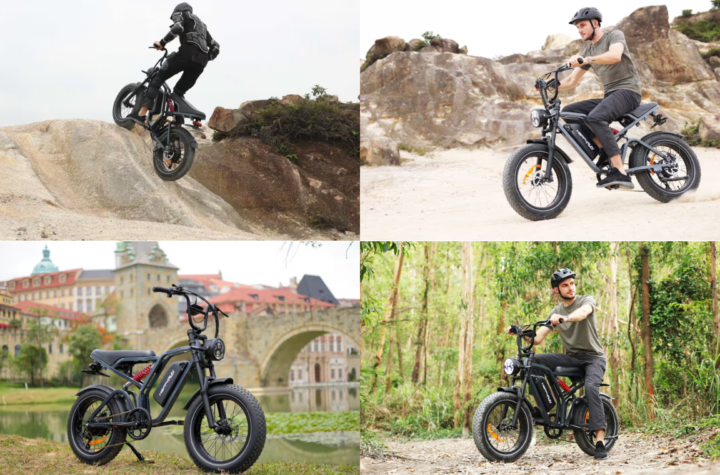
Companies are gearing up for the next round of emissions laws by relying on a growing list of products and technologies designed to meet and exceed environmental regulations on pollutant exhaust and fuel improvements. Below is a small sampling of some of the tools being offered that enable car makers to stay ahead of the emissions curve.
Fuel Mass Flow Meter
AVL has introduced the second generation of the AVL Fuel Mass Flow Meter. The new Mass flow Meter features high reliability in test bed operation and easy application to new engine mixture preparation systems like gasoline- and diesel-direct injection systems. The required time for accuracy check and meter calibration has been reduced significantly. With a measurement range from 0…125 kg/h the system can measure from a single-cylinder up to a 600 kW large engine without changing the measurement sensor or the measurement system.
A new PC software, which is part of the standard supply of the Mass Flow Meter, features graphical diagnostic user interface for easier service application The AVL Fuel Flow Meter is used for continuous fuel consumption measurement in gasoline and diesel engines on engine test beds and chassis dynamometers in research, development and production.
The measurement system is based on a Coriolis mass flow-rate sensor. According to AVL, high sensitivity and accuracy are achieved by the use of a very small bore sensing pipe. A pump upstream of the sensor delivers the necessary pressure, while a regulator downstream ensures a constant outlet pressure.
Gasoline Fuel Injectors
 |
| Delphi will introduce its Multec 3 gasoline fuel injectors to customers in Asia Pacific. Multec 3 is a family of fuel injectors that is targeted to cover the spectrum of high performance and low cost. |
Five production lines will be added to the current facility and initial production will begin this September. To accommodate manufacturing, a special production clean room of more than 1,100 square meters is under construction. This clean room is fully equipped to precisely control environment temperature, humidity and air borne particulates.
“Multec 3 is our next generation of MPFI fuel injectors and it’s a family of fuel injectors that is targeted to cover the spectrum of high performance and low cost. Meaning, we’ve got the derivatives of the injector that are being used for the highest performance requirements — the lowest emission requirements, as well as less stringent emission requirements and low cost,” says Steve Kiefer, business line executive for Delphi’s gasoline engine management systems business line.
“We will continue expand this product globally,” adds Keifer. “The investment in China is part of our effort to make the lowest cost injector in the market. We are going to continue to move the Multec 3 to other regions in the world. There is a South American launch that we will be announcing. This will be our global MPFI injector for the future.”
Earlier this year, Dephi announced that it will invest $50 million over the next six years to upgrade the company’s advanced engine and emission test facilities. The investment will allow Delphi to improve its Engine Dynamometer Labs and Vehicle Emissions Labs at eight of the company’s technical centers worldwide.
Particulate Filter System
Beginning in October, Mercedes-Benz will offer the combination of EU 4 exhaust emission standard and diesel particulate filter for its diesel passenger cars. The combination of EU 4 and diesel particulate filter will initially be available for the C-Class and E-Class models with four-cylinder CDI engines. To date, 85 percent of C-Class and about half of all E-Class diesel customers have opted for the 200 and 220 CDI engines. At the beginning of next year, the six-cylinder CDI engines in the E-Class and S-Class will follow suit, offering both EU 4 and diesel particulate filters.
Developed by Mercedes-Benz, the particulate filter system operates without additives and, depending on the individual use profile and thus with no fixed change interval, remains efficient over a very high mileage, the company says.
“This makes us the first manufacturer to offer a system which both adheres to the EU 4 limits and almost completely eliminates particulate emissions — and does so with our most important diesel engines, the one which dominate fleet business,” says J?rgen Hubbert, member of the Board of Management of DaimlerChrysler AG and Head of the Mercedes Car Group.
According to Mercedes-Benz, service life, everyday practicality and fuel consumption were key criteria in the development of the particulate filter system.
With the Mercedes-Benz particulate filter system, it is possible to achieve high mileages without the need for additional service measures, the company says. The filter is regenerated by adjusting, in accordance with requirements, various engine-control functions, such as fuel injection, intake-air throttle, exhaustgas recirculation and boost-pressure control.
In this way, it is possible to increase the temperature of the exhaust gas and the particles accumulated in the filter are burned off. Mercedes-Benz claims that test results show that, after a high mileage, the residual ash is up to 75 percent less than that produced by additive-dependent filter systems.
Due to the new particulate filter and its new CDI engines Mercedes-Benz has reduced particulate emissions by about 87 percent since 1995. From 2005, the EU 4 limits also stipulate a further 84-percent reduction in gaseous emissions.
On-Board Emissions Testing
 |
| Sensors Inc.’s SEMTECH systems are designed to provide monitoring and analysis of exhaust gas components in engines operating in the field. |
“No matter how sophisticated you make a laboratory test procedure, it will never truly replicate in-use operating conditions,” says Andrew Reading, president of the Saline, Mich., manufacturer. “The only accurate way to get results is to monitor the vehicle as it goes through its normal duty cycle under real-world conditions.” To achieve that purpose, the company has developed on-vehicle analysis systems for in-use testing of diesel and gasoline vehicles and equipment.
And its technology achieved a strong measure of validation in last year, when Sensors Inc. was awarded a contract from the U.S. Environmental Protection Agency to supply on-vehicle emissions analysis systems for its testing programs.
“This is truly a major milestone for our company,” says Reading. “We’ve worked hard to position ourselves as the industry leader in developing analytical equipment that monitors the actual emissions produced while vehicles are being driven on the road.
“EPA is now talking in terms of not-toexceed emissions limits and our devices will determine whether the vehicle is in or out of that not-to-exceed zone. Later on, the calibrators, the R&D people and the engine development people can go back, look at the record and really see what the vehicle was doing when the emissions went outside the zone.”
Sensors Inc.’s SEMTECH (Sensors Emissions Measurement Technology) systems are designed to provide immediate analysis of key exhaust gas components, including total hydrocarbons (THC), oxides of nitrogen (NOx), carbon monoxide (CO) and carbon dioxide (CO2). Using Sensors Inc.’s proprietary NDUV (nondispersive ultra violet spectroscopy) module, the NO and NO2 constituents of NOx can be measured simultaneously and independently. Measuring 22 in. long, 17 in. wide and 14 in. high, the SEMTECH-D (diesel) unit is little larger than a piece of carryon luggage, the company said, and the gasoline version (SEMTECH-G) is slightly smaller. The diesel unit weighs approximately 70 lb. and typical installation time is under 30 minutes.
Hydrocarbon Trap
 |
| Visteon Corp.’s hydrocarbon trap is positioned the air cleaner section of the vehicle to capture fuel vapor leaving the engine when the engine is off. |
The fuel vapors trying to escape the engine are collected onto the hydrocarbon trap, which has a chemical mechanism to retain the fuel vapors. When the engine is running, the flow of air through the trap pulls of the fuel vapor and the engine uses the fuel vapor for power, cleaning the trap for use at the next engine shut down.
“We use activated carbon, which basically chemically filters the air coming from the engine and filters out the fuel vapors, and that is the key action that reduces the evaporative emissions,” says Greg Green, product marketing/sales engineering manager at Visteon.
To get the activated carbon into the air induction system, Green admits that engineers faced a couple of challenges.
“One is that we really can’t use a pellet approach like you use in a carbon canister because that would cause too much horsepower loss for the engine. We had to go to a different type of activated carbon process. In this case it was a carbon honeycomb,” says Green.
“To make the carbon honeycomb robust to the under hood environment,” adds Green, “we had to develop a patented housing to cushion the hydrocarbon trap and also to condition the airflow that flows back to it so that we don’t have issue related to the extreme pressure changes.”
According to Green, the hydrocarbon trap was designed to withstand up to a maximum of 300 degrees F and has a lifespan of more than 15 years and 150,000 miles.













More Stories
From Gasoline Powered Cars To Electric Vehicles | Electric Moped Bike A Best Alternative
Rubbernecking: A Silly Reason for Car Accidents
Flexible Magna Manufacturing Solutions: The Key to Success in the Automotive Industry